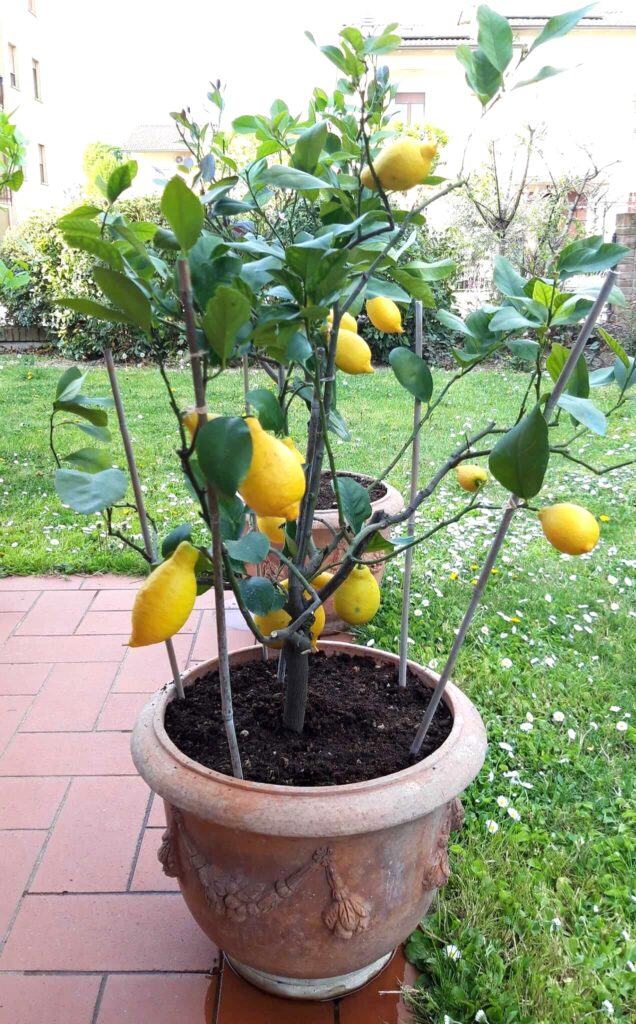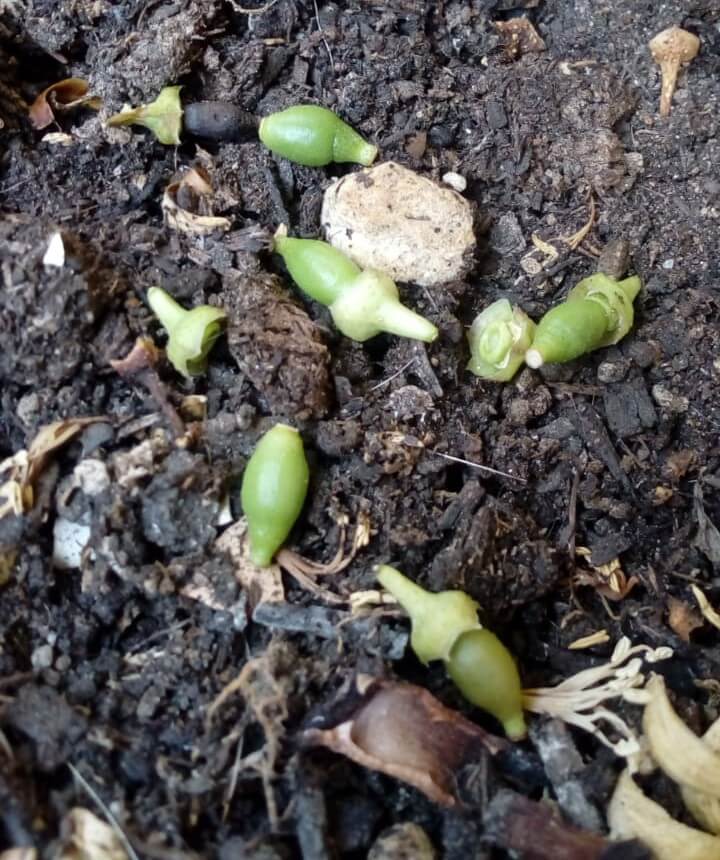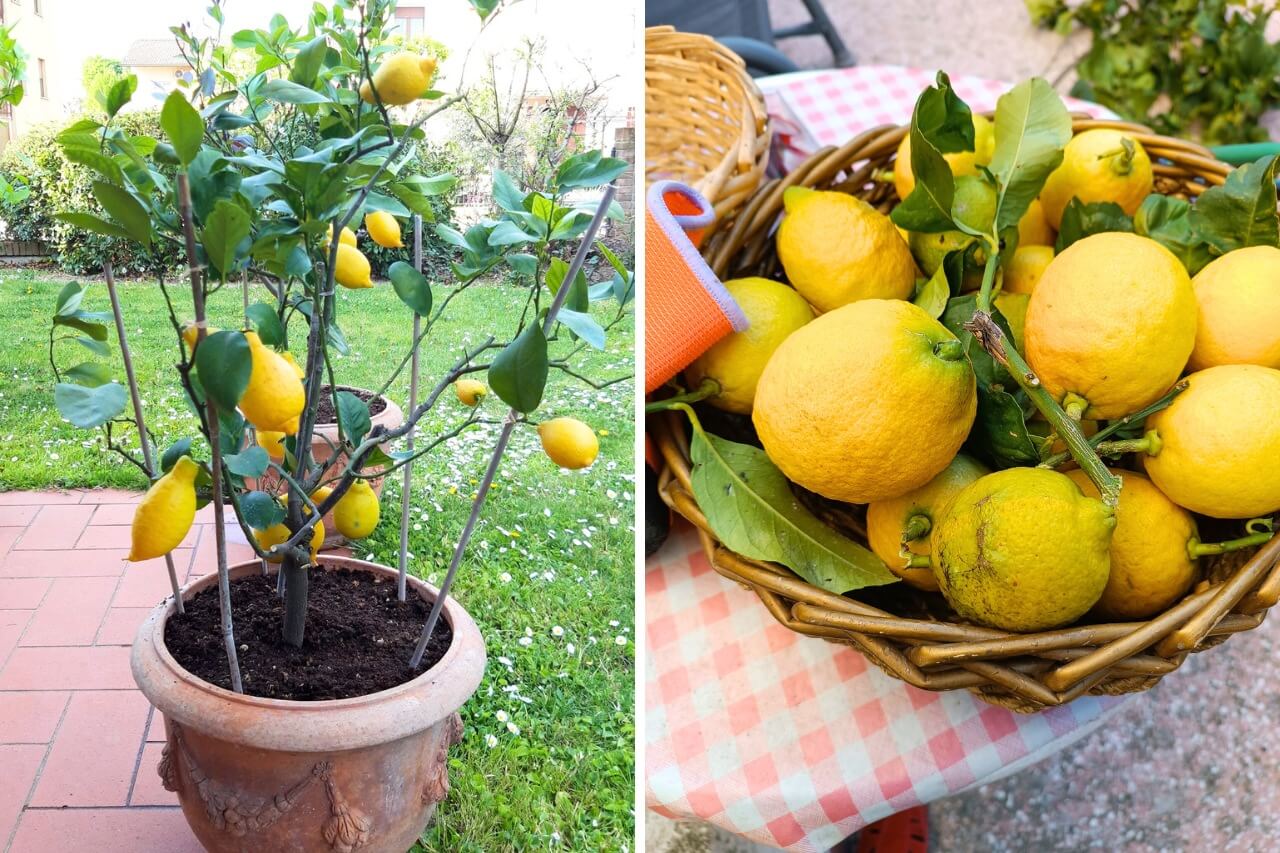I’ll be honest with you right away, among the countless experiments I’ve done in my garden, I’ve tried growing lemons in containers not once, but twice.
And I have to say, compared to the lemon trees I have planted directly in the ground, I ran into way more challenges.
Luckily, I eventually managed to get pretty decent results with one plant that now produces a good amount of lemons.
But I noticed something: even the tiniest mistake can keep your lemon tree from bearing fruit. That’s why, after all these trials, I decided to write this step-by-step guide with the best tips to grow perfect lemons in containers.
I hope you find this useful, and that it helps you grow beautiful lemons in no time!

Lemons in Containers
The first thing I wanna say is that lemons planted in containers don’t grow as large as those cultivated on the ground, so you need to be very careful when choosing the variety.
Eureka, Lisbon, Ponderosa, and Meyer lemons are popular (and I’d say the best) choices for home plants. Dwarf varieties like these usually grow under 5 feet, and can be kept at even smaller sizes using pots, so you can pick one to fit your space.
Also consider that grafted lemon plant is best if you prefer a faster yield. This way, you can enjoy fresh, homegrown lemons within 3 years. Seed-grown trees take definitely longer.
Get Your Container Right

Getting your container right is crucial when growing plants in pots or indoors. You want a pot with enough room for the lemon plant to grow, and the right material to facilitate optimal growth.
However, don’t pick a huge container immediatly. When I planted my first lemon plant I thought more space was always a good thing, however citrus roots are prone to root rot, and too much soil often results in too much excess water.
Instead, start with a smaller pot for the young plant and gradually increase the size (always 15% bigger than the last) as the tree grows for easier moisture management.
Terracotta containers are great for their moisture-wicking ability. This will help the lemon’s sensitive roots to remain dry between waterings.
I know they are more expensive than plastic, but if you are not on a tight budget, aim for terra cotta pots, which are perfect for many plants.
The Potting Mix

Containers aside, citrus plants thrive best in light, well-draining, slightly acidic soil. Keep this in mind when blending a potting mix for your lemons.
Standard potting mixes, such as compost, peat moss, and vermiculite, are fine so long as they drain water quickly. Ideally, you want a nutrient-rich base blended with perlite, coco coir, or sand.
If you think your potting mix is too heavy for your lemon sprout, try adding hardwood bark chips to improve aeration.
If you are a beginner buy citrus-specific potting soil directly, I saw several at my garden center last time I was there, so they should be fairly easy to find.
Watering Lemon Trees
Unlike many other plants, lemons prefer infrequent but deep watering.
A newly potted citrus sprout has to be watered deeply every other day so the root ball gets enough moisture. Once the plant has grown, you can slow the watering down to twice a week.
Most lemon varieties like to dry out between waterings buy you must never let the potting soil dry out too much. Again, these are water-sensitive plants, and leaving them parched for too many days will cause lemon trees to lose leaves.
On the contrary, overwatering will rot the plant’s roots. Use the usual finger check to see if the soil (in depth) is dry before watering.
Essential Tips to Follow

Perhaps the mistake I made in the beginning and which I imagine many other gardeners make, is not to consider that lemon trees are very heavy feeders.
That means they have higher nutrient needs than most plants and may need fertilizers and other soil amendments.
Keep in mind that citrus plants need more nitrogen than phosphorus or potassium (NPK), so look for formulations with double or triple the amount of nitrogen.
Nourish your lemon plant with fertilizer every one to two months in its first year, slowing down to every three months when it becomes dormant.
After that, you only feed the citrus three times every year: once in the spring, once in the fall, and once in late winter.
Since I have been following this routine, I have started to have nice big, juicy lemons, compared to the ones before that were a bit dry.
In terms of pruningm keep it minimal and only in late winter or early spring.
Just cut off rootstock shoots and dead branches, and If you like (i personally do it) you can also prune the thorns to make handling the lemon plant easier.

